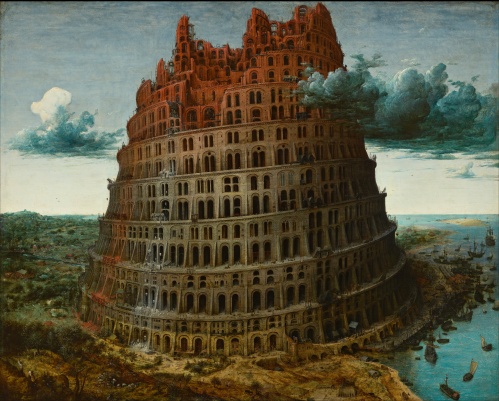Melvin: Origins of Human Civilization–Divine Mediation or Human Endeavor?
by Estéban Trujillo de Gutiérrez
“In the study of Genesis 1–11, it is common for scholars to make comparisons between the biblical material and ancient Near Eastern myths. The discovery of large numbers of texts from Mesopotamia and Ugarit during the nineteenth and twentieth centuries created a veritable deluge of comparative studies of the primeval history.
While the observation of the many continuities between Genesis 1–11 and Mesopotamian myths has contributed greatly to our understanding of this portion of the biblical text, it is also important to note the discontinuities between the biblical and extra-biblical material.
One such discontinuity relates to the origin of human civilization. In Mesopotamian myths, civilization arises via the intervention of gods or other divine beings. It is portrayed variously as a gift bestowed directly upon humanity, an institution preceding the creation of humanity (via the creation of patron deities of various technologies), or the bestowal of knowledge upon humans by gods, sometimes through intermediary beings.
In Genesis 1–11, on the other hand, there are no divine mediators, and there does not appear to be any divine assistance in the rise of civilization.
(Late Second Temple period expansions of the tradition preserved in Genesis 6:1–4, such as 1 Enoch 6–11 and Jubilees 4:15, 21–23a 8:1–4, do include angelic revelation of secret knowledge which contributes to human civilization.
Although a few scholars, most notably J. T. Milik and Margaret Barker, have argued that these works preserve elements of an earlier, more extensive tradition which Genesis 6:1–4 has abridged, their proposals have not met with much acceptance.
See J. T. Milik, The Books of Enoch: Aramaic Fragments of Qumran Cave 4 (Oxford: Clarendon, 1976), 30–32a; Margaret Barker, The Older Testament: The Survival of Themes from the Ancient Royal Cult in Sectarian Judaism and Early Christianity (London: SPCK, 1987), 18–19a; see especially the review of Barker by Nickelsburg in JBL 109 (1990), 335–37. See below for a further discussion of this possibility.)

Click to zoom. Pieter Brueghel the Elder (1526/1530-1569), The Tower of Babel (circa 1563-1565, oil on panel, Museum Bojimans Van Beuningen, Room 06, Rotterdam. Accession number 2443 (OK). Bequeathed to the Museum Bojimans Van Beuningen by Daniël George van Beuningen.
Brueghel painted three versions of the Tower of Babel. This one is in the collection of the Museum Bojimans Van Beuningen in Rotterdam. A second version is in the collection of the Kunsthistorisches Museum in Vienna. A third version, a miniature on ivory, is apparently held by a private collector. Its disposition is unknown.
The official position taken by the Wikimedia Foundation is that “faithful reproductions of two-dimensional public domain works of art are public domain”.
https://commons.wikimedia.org/wiki/File:Pieter_Bruegel_the_Elder_-_The_Tower_of_Babel_(Rotterdam)_-_Google_Art_Project.jpg
Rather, civilization is the product of human endeavor. In Genesis 4:17–22, humans discover or invent various aspects of civilized life: city-building, animal husbandry, music, and metallurgy. The human source of city-building is further underscored in Genesis 10–11 with the construction of cities by Nimrod (10:8–12) and the building of the city and tower of Babylon (11:1–9).
I propose that the absence of divine mediation from Genesis 1–11 shifts the responsibility for civilization and the evils which accompany it onto humanity, particularly through the Eden narrative’s portrayal of civilizing knowledge as illicitly acquired divine knowledge.
In order to make this case, I will first examine the Mesopotamian literature to establish the mythological background which Genesis 1–11 rejects. Then, I will analyze the relevant biblical texts in order to demonstrate the absence of the instruction motif. Finally, I will argue that the Eden story in Genesis 3 is the key to understanding how and why the mythological motif of divine instruction was excluded from Genesis 1–11.”
David P. Melvin, “Divine Mediation and the Rise of Civilization in Mesopotamian Literature and in Genesis 1-11,” Journal of Hebrew Scriptures, 2010, pp. 1-3.

[…] Melvin: Origins of Human Civilization–Divine Mediation or Human Endeavor? […]
LikeLike